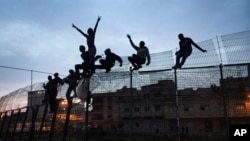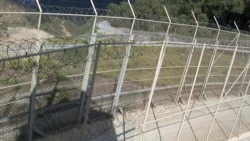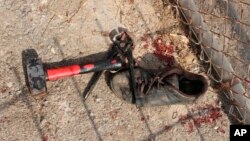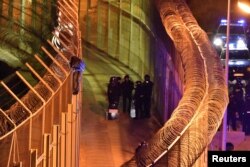From Ceuta’s highest peak, Europe seems within touching distance.
In the foreground, the city itself: The gateway between the Atlantic and the Mediterranean, between Africa and Europe. A mixture of cultures, architecture and people cultivated through centuries of trade and conflict. Beyond lies the 13-kilometer Strait of Gibraltar dividing the two continents, one of the busiest shipping lanes in the world.
And on the horizon, the Spanish mainland.
WATCH: Spain's Enclaves Feel the Pressure on Europe's Frontiers
Frontline in EU migrant battles
The tiny Spanish enclaves of Ceuta and Melilla on the northern tip of Morocco have attracted migrants for centuries. They remain at the frontline of the pressures on the European Union’s external frontiers.
This year, there has been a sharp uptick in the numbers trying to breach the border fences. Several thousand migrants sleep in the forests on the Moroccan side of the border waiting for their chance to cross.
On the morning of July 26 of this year, more than 600 migrants stormed the fence, cutting through the wire and breaking through into Ceuta, one of several mass breaches of the border in recent months.
The Spanish Civil Guard is tasked with securing the frontier. Spokesperson Alfonso Cruzado said the July assault was the latest example of increasing violence.
“They used tools like angle grinders, shears, mallets. They burst through, and then they threw caustic soda, acid and homemade flamethrowers to prevent us from getting near,” Cruzado said as he took VOA on a recent tour of the border fence.
Despite the pressures on the frontier, Spain’s government wants to remove the razor wire, as it often causes horrific injuries to migrants. It will be replaced with “smart” sensors that alert border guards to any breaches of the fence.
Sen. Fatima Mohamed Dos Santos represents Ceuta for the opposition People’s Party in Madrid. She wants to keep the razor wire in place.
“It’s like making an advertisement that the fence will be permeable. Most of the immigrants come here for economic reasons. The (people-smuggling) criminal gangs exploit the message that they can find a better life,” Santos told VOA.
Long journey to Ceuta
It’s a message that has driven Mamadou Camara thousands of miles from his home in the Guinean capital of Conakry to reach Ceuta. It has taken him two years, including a year living in the forest in Morocco. He was among the 600 migrants who broke through in July.
“To make it into Ceuta, it’s only God who can decide that. Because with the rush (at the fence), it is only God’s spirit that can control what happens, you understand? That was how it happened. I made it over and arrived here,” Camara said.
Camara spends much of the day at the San Antonio day center for migrants, run by the Catholic charity, Cardijn. It offers Spanish lessons, games and computers, a chance to chat online with family back home. Many of the migrants here are teenagers who traveled alone.
Stress of waiting
Coordinator Maite Perez said she hopes the center offers a chance for the young migrants to decompress after the journey to Ceuta, which often involves sleeping rough and trying to evade brutal treatment at the hands of smugglers and police.
“In the moment that they stay here, they come to sleep in a normal bed. It’s a different situation. For them, it’s like this is not a moment for relaxing, (but instead) for waiting for the moment they pass to the mainland. Usually, they have a problem for this reason, for stress, for depression.”
Spain has built separate accommodation blocks to house adults and minors. It is undoubtedly a big improvement on the makeshift migrant camps that used to scar the hillsides in Ceuta. But the shelters are often at double capacity, with 10 people to a room.
The migrants must wait in turn to be taken to the Spanish mainland, and this can take a year or more. Many migrants voice frustration at the delay, as they are unable to work or to move on deeper into Europe.
So for thousands of Africans, Ceuta has become a temporary home, the final stepping stone on the long journey to a new, unknown future.













